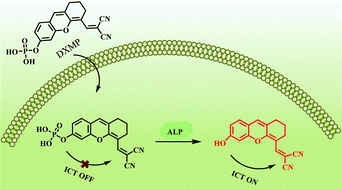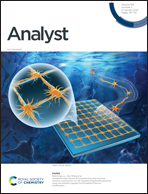A turn-on near-infrared fluorescent probe for visualization of endogenous alkaline phosphatase activity in living cells and zebrafish†
Abstract
Alkaline phosphatase (ALP) is an essential hydrolase and widely distributed in living organisms. It plays important roles in various physiological and pathological processes. Herein, a turn-on near-infrared (NIR) fluorescent probe (DXMP) was developed for sensitive detection of ALP activity both in vitro and in vivo based on the intramolecular charge transfer (ICT) mechanism. Upon incubation with ALP, DXMP exhibited a strong fluorescence increment at 640 nm, which was attributed to the fact that ALP-catalyzed cleavage of the phosphate group in DXMP induced the transformation of DXMP into DXM-OH. The probe exhibited prominent features including outstanding selectivity, high sensitivity, and excellent biocompatibility. More importantly, it has been successfully used to detect and image endogenous ALP in living cells and zebrafish.

- This article is part of the themed collection: Analyst Recent HOT articles


 Please wait while we load your content...
Please wait while we load your content...